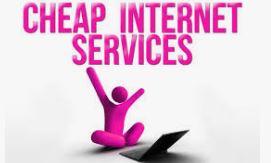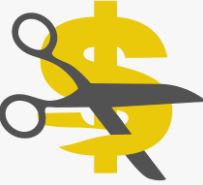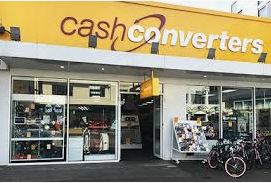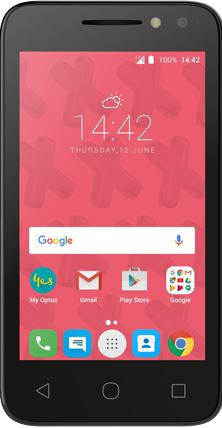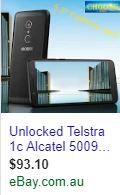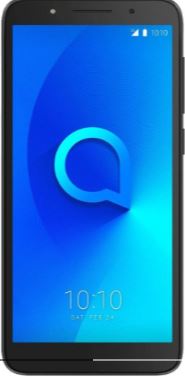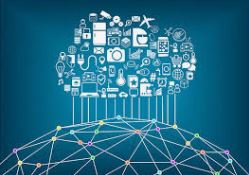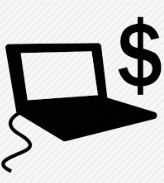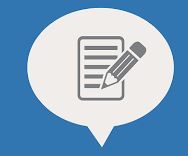Table of Contents
Least expensive way to use the internet
To watch a video on all this click on here: https://youtu.be/VoKe-UpdwhU
Use a friends or Free one, Ther Device
In the movie Alice's Restaurant, when Alice opens a new restaurant and Arlo Guthrie turns up, he said to her, “ just what I've always wanted”, she says “ a restaurant”, to which he replies, “ no a friend with a restaurant”.
https://youtu.be/FDI-mt0R6SIt=34m38s
So maybe you don't need the internet you just need a friend with the internet. This would be one of the least expensive ways of using the Internet. You just use a friend's internet. It could be a friends computer, mobile phone or tablet. But unless the friend lends you a phone or tablet you have to use the internet at their location. Later on you can see even if you own your own device, a friend may allow you to share their internet connection.
But what if you don't have any friends that are willing to let you use their internet. Most libraries provide free internet. They usually have computers that allow you to connect to the internet. But it means you have to physically go to the library. Other than libraries there are some community organisations that have computers setup allowing you to use them for free, to access the internet. Although it is not very common, sometimes businesses will provide computers with free internet, but it is usually associated with some other service. Eg. in the foyer of motels, but you have to be a customer of the motel.
Using your own Device
If you use your own device to connect to the internet, it has to be either a computer a tablet or a mobile phone. Other than the various sizes, models, performance, new or second hand, etc the cheapest of these devices is a mobile phone, followed by a tablet then a computer.
Again the least expensive way to get one of these devices is to have someone give it to you for free. Often relatives or friends may upgrade their technology and give ther older technology to you. If you ask a relative or friends, they may have an old device sitting in a cupboard or drawer at home that they may have forgotten about, but they're willing to give to you
Second hand
The bulkiest thing to buy second hand, would be, a computer. Because of the advent of tablets and mobile phones ther are a lot of old Desktop computers hanging around. A lot of good old working computers often are thrown down the tip. There are some organisations around that rebuild or refurbish older desktop computers. Example would be Substation 33.
https://substation33.com.au/?doing_wp_cron=1539571324.8490319252014160156250
The Tower part only, of refurbished desktop computers usually range in price from $45 up to $400. You also then need a screen, keyboard, Mouse, and possibly microphone and speakers.
The disadvantage of a desktop computer is that you need more than it, to be able to connect to the internet. You will need another device, such as a router or WiFi connection.
The next bulkiest second hand device to buy is a laptop computer. From about $200. Laptops have the advantage of being portable and usually have built-in Wi-Fi, so that they can connect to a WiFi connection to be able to get the internet without having to buy any additional devices.
Then there are secondhand tablets and phones. From $19 upwards can be found on the internet or $45 at places like Cash Converters. Again depending on make, model, performance and specifications
What to watch out for when you buy these second hand
Because of fast changing technology you can sometimes purchase, for less money, a brand new mobile phone or tablet which has better performance, then a second hand one, which is a few years old. When you factor in that a second hand device has no or very limited warranty compared to a new one, that would come with at least a 12 month warranty, the price difference needs to be reasonably substantial. A mobile phone that a year or two ago may have cost $1,200, that is being sold second hand for a $100, may sound like a good deal. , But it may not be as good as a brand new $90 phone, today.
If you're going to buy a device to be able to connect to the internet, second hand, then you should test that it does connect to the internet, before paying for it.
If you're considering purchasing a more expensive second hand device, make sure you know how to use it before you buy it. It could be false economy to buy something only to find that you then have to learn how to use all it's functionality, some of which you may never use. It would be more economical to buy something less expensive, learn how to use it, and then if you find you need more functionality or performance later buy a more expensive second hand device.
When using the Internet it is the software such as an internet browser or an email client that provides functionality, not the physical device. As generally the software can operate on any device, having a more expensive device is not going to provide any more functionality. Sometimes more expensive devices can operate faster. However, when viewing the internet, as the most time is spent looking or reading, having a faster device may not be of any great benefit.
All other things being equal, the speed at which web pages are displayed on a device is mostly control by the speed of the internet connection rather than the physical device itself.
Second hand smartphones
At cash converters the least expensive one I could find was $15.20 for small low powered Android phone. The iPhones tend to be more expensive the least expensive one was about $45 for quite a few generations old
Least expensive New smartphones
Found this one on special at Big W at the time for $29
https://www.optus.com.au/shop/prepaidmobile/optus/x-play
Found this on eBay, quite a good model with fingerprint recognition and a quad core processor.
At the time of writing Target had these in store for that $89 prepaid
As at 29/5/19 Kogan had this for $67.98 including free shipping:
https://www.kogan.com/au/buy/mob-zte-boost-zume-5-b112-4glte-quad-core-8gb-grey-zteb112blk/
The internet connection
Just owning a device is not sufficient to be able to connect to the internet. You still have to have some way of making an Internet connection. Typically this is done either via a physical cable or via some wireless system, whether that be Wi-Fi, Bluetooth or mobile internet.
Generally mobile phones, tablets and laptop computers do not connect physically to the internet via a cable. They use mainly WiFi or mobile wireless connection. Where as desktop computers do have a cable going from themself usually to a modem router which connects to the internet. Hence desktop computers can only be used to connect to the internet when they are next to a router modem.
A free internet connection
As explained briefly earlier, if you have a neighbour or friend that has an internet service you can connect your laptop, tablet or mobile phone to their service via wifi if they allow you to. This is usually done with a WiFi connection and may or may not require a password. As Wi-Fi signals only travel a relatively short distance, you may have to be physically at your friends or Neighbours premises to be able to use it. However I have heard of situations where a a WiFi signal extends far enough so that neighbours can connect.
Many shopping centres, businesses, Banks, educational institutions libraries and restaurants often provide free wifi for their clients. It is often called a Wi-Fi hotspot and can be identified by looking at the Wi-Fi settings on your device. Other than having to be physically at, or close to these institutions, other limitations can be that there is a data limit or time that you can use it and sometimes the speed of them can be quite slow.
Paying for an Internet connection
Although now getting a bit old, see the material on wrote on Choosing an Internet Plan in 2015
There are many ways of paying for an Internet connection and some are less expensive than others. Generally the more cabled you are, the less per unit of data you pay, the more you use. Generally mobile data in a mobile phone plan is more expensive than cabled data. You can also purchase data on paid for WiFi hotspots. I am not aware of any internet service where you pay a one time fee and get data forever. Most paid for internet is provided on a monthly basis for a certain amount of data and at the end of the month you have to pay for another month to get more data. I'm also not aware any internet where you only pay for what you use. You need to make a decision as to how much data to buy and either use it up in the required time or end up buying more.
Generally when you purchase internet data the more you purchase the less it cost per unit of data. Those selling internet want you to spend as much as possible.
For example an internet provider for mobile internet charges $20 for 4 GB, $30 for 10 GB, $35 for 20GB and $40 for 20 GB. The price per gigabyte works out less the more data you buy.
See What data is and Data Vs Data Capacity
Provided you use all the data, you will be getting a better price for the more expensive options. However if you don't use all the data in the required time, usually a month, you could end up paying more per gigabyte. In all the above options, if you were to only actually use one gigabyte, you would be actually paying $20, $30, $35 or $40 per gigabyte, respectively. It is important to know how much data you expect to use and how much you actually use.
If you monitor how much internet you have used and how much you have left you can save information to your device for later watching or reading, so fully utilising the data that you purchase. It is not necessary to be on the internet to be able to see and read material thats on the internet. See the next section
Saving data for later reading, watching or transmitting
When you use the internet the information that you see on your device has actually been copied from another computing device on the internet to your device. This is sometimes called caching. At some point, this cashed data is automatically removed to make space for more information. However you can tell your device to make a saved, more permanent, copy of the information. On web browsers there's usually a save webpage complete, function. Or you can just highlight any text right click or long press an it and select copy. Then go into some other application and paste the information and save it. Graphic images can usually be right clicked on and saved. Even playing videos and audios can be saved with the appropriate software or functionality. This save information can later be read and watched usually the same application used to save it. Saving internet information gives you greater flexibility, when you have a limited amount of data or you're using any of the free ways of getting internet, described above.
Likewise when you create data to put on the internet. You do not have to be connected to the internet to create the data, No matter what form of data it is. You can use an application to create and save the data whilst you're not on the internet and at a later time connect to the internet and send the data you have saved. Even if the website you're using does not have an upload function, you can select and copy data and paste it into where you would normally key in data to the internet.
Summary
With the help of friends Neighbours a library or whatever you can actually use the internet without any cost at all. For only $20 or $30 you could buy a second hand mobile phone and use free wifi services to connect to the internet. For less than $100 you can buy a new mobile phone and possibly use free wifi hotspots. For $10 you can get 6 GB of mobile data to use within 28 days. Buy saving internet information you can use it when you are not on the internet.

